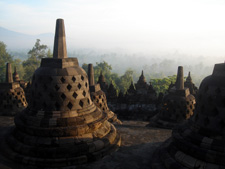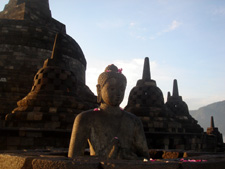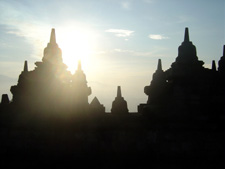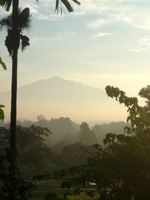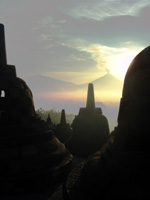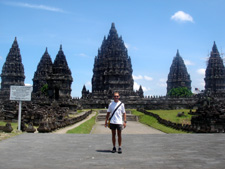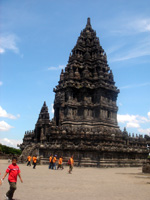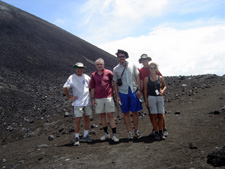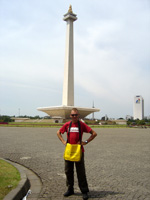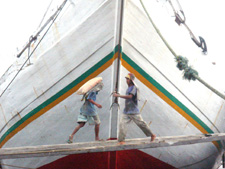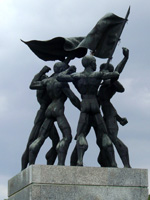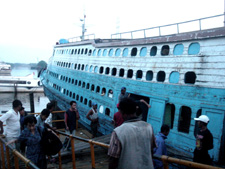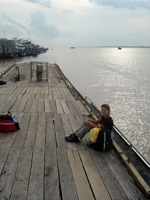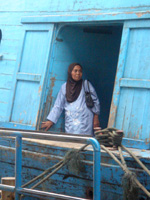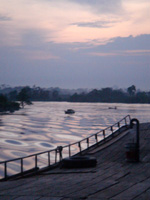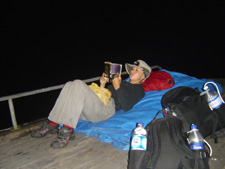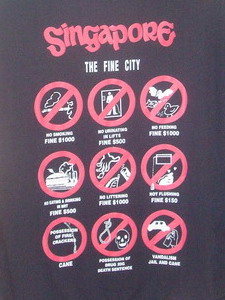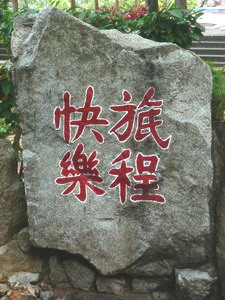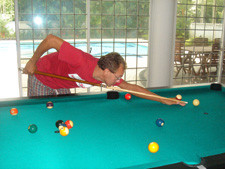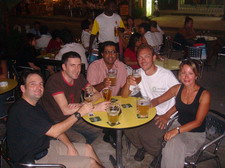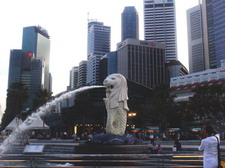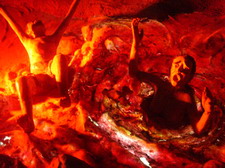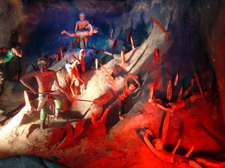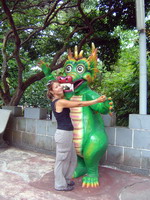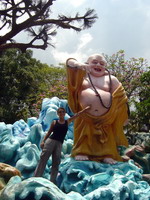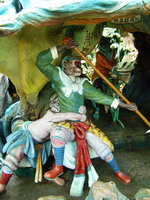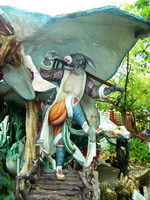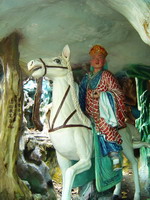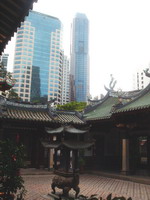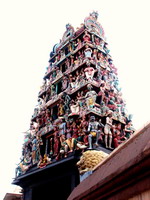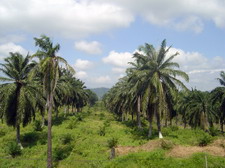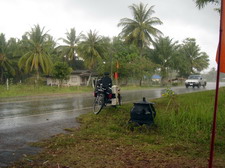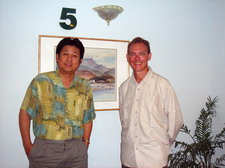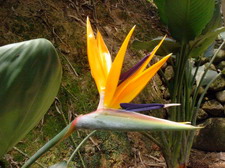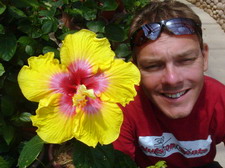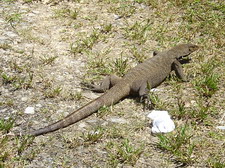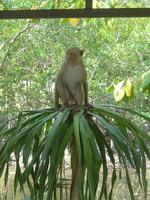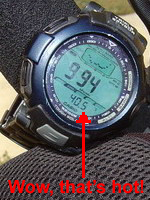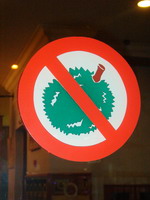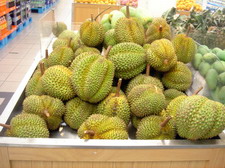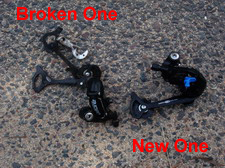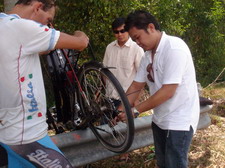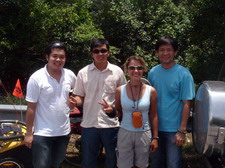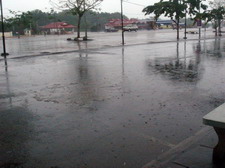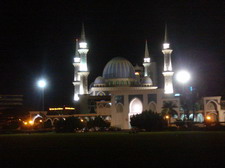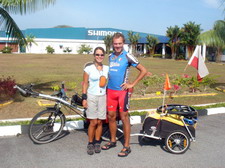Day 255: Wonders of Central Java
Apr 14th, 2006 by Nuts On Bents
Hugging the north coast and then swinging down south into central Java, we arrived in the city of Yogyakarta (or Jogja, as the locals call it). It is a popular tourist destination that is considered to be the very heart of Javanese culture and handcrafts. All classical Javanese arts (batik painting, wooden and shadow puppet shows, gamelan music recitals, and so on) thrive in Jogja as nowhere else in Indonesia. Most tourists are attracted here not only by the arts, but also by the nearby temple complexes of Borobudur (Buddhist) and Prambanan (Hindu).
The day we arrived in Jogja was another public holiday – thus making it almost impossible to find a room for the night. We didn’t realise that the next day the Sultan of Jogja would lead a special religious ceremony in the palace – which meant that all of Indonesia had descended on Jogja for the occasion!! Thankfully we found a tiny fan room in a back-street losmen (like a family run B&B).
Borobodur – the largest Buddhist temple in the world
We had to get up before we went to bed (or so it seemed at 4am in the morning!) – so we could catch the magnificent sunrise at Borobudur, and have it to ourselves before the hoardes of tourists arrive. The temple is a colossal multi-tiered Buddhist stupa from the 9th century. It is rather squat – like a collapsed pyramid – and the sheer size of it is not that obvious at first glance (hence the aerial picture we got off the web). It has three tiers – the first two covered in reliefs depicting man’s earthly existence, desires and passions (first tier) and man’s path to enlightenment (second tier). The top tier has no reliefs as it depicts man’s reaching nirvana, represented by a huge stupa in the middle. Each stupa at this level contains a Buddha image, the stupa covering his form, as nirvana signifies a state of non-being or formlessness.
From the top of the temple we could see Volcano Merapi in the distance – ominously smouldering with a plume of smoke (see last photo below). Our guide explained that the locals were expecting an eruption that year, since it came every four years. One week later the volcano was in international news – with an eruption expected imminently. Evacuation plans were being put in force.
Prambanan Hindu Temple Complex
Contemporary to the Buddhist Borobodur is the nearby Hindu temple complex on the Prambanan plain. It was built by the Hindu dynasty that took over power from the previous Buddhist dynasty. The complex consists of six temples, dedicated to the three main Hindu deities: Shiva, Brahma, and Vishnu. Alas by the time we got there the place was crawling with school kids on a day-trip, thus rendering it almost impossible to climp the narrow steps into each temple to see the god/goddess statues inside.

